"Energy and Beauty"
Time takes on a new dimension on this tour: in just 10 days, you'll experience a fast-forward through the history of Earth and humankind and experience the connection between past and present, including a brief glimpse into the future. 8 UNESCO World Heritage Sites are included among the many outstanding stops on your journey through time.
You can find details of train connections at:
Cheap Train Tickets | Timetables for Germany & Europe - Deutsche Bahn
Route info
Recommended duration of trip: 10 days
Total distance: 851 km
Recommended modes of transport: Train, bicycle, other public transport
Number of UNESCO World Heritage Sites visited: 8

Munich (1 night)
- Day 1: Stroll through the city, and visit the Deutsches Museum. Next take a stroll through the Viktualienmarkt to the English Gardens, ending with a trip to one of the traditional beer gardens.
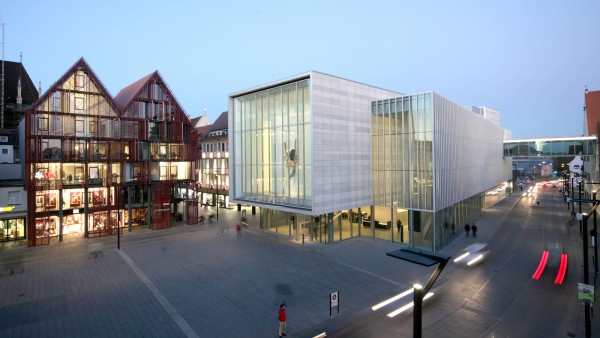
Ulm (2 nights)
- Day 2: Continue your journey on to Ulm (1.25 hours by train). Stroll through the city, from the past to the present: through the historic fishermen's quarter to the world's highest church tower, and the ultra-modern Stadthaus right next door.
- Day 3: Rent bicycles in Ulm and ride them along the Ice Age Valleys Cycle Route (75 km), through picturesque landscapes of the Ach and Lone valleys, to the 6 World Heritage Ice Age caves. There are plenty of places to stop for refreshments, charge your e-bike, and stay in cycle-friendly accommodation along the way. Arrival: Train to Schelklingen (20 mins); Departure: Niederstotzingen to Ulm (30 mins); bicycle transport possible.
Tip:
If you want a little more time to explore the caves and Ice Age art, you can split the tour into two stages and do both as day trips from Ulm.
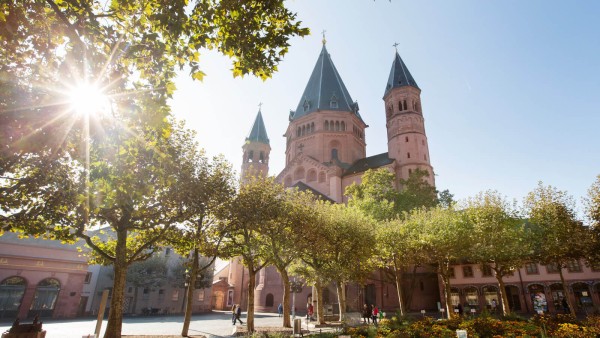
Mainz (1 night)
- Day 4: Continue your journey on to Mainz (2.5 hours by train). Stroll through the city to the ShUM sites. The Old Jewish Cemetery offers a journey through Jewish history, as does the State Museum with its remarkable collection of Jewish cultural objects, and the New Synagogue,a spectacular building by architect Manuel Herz inaugurated in 2010.
Tip:
Mainz is one of the Great Wine Capitals and is located in the largest wine-growing region in Germany. Taste the wines of the region in one of the city's wine cellars. - Optional excursions to the two other ShUM cities: Speyer (1.5 hours by train), with the Judenhof, the SchPIRA museum and the medieval synagogue, or Worms (30 mins by train), with the Worms synagogue district and the Jewish Cemetery Heiliger Sand.
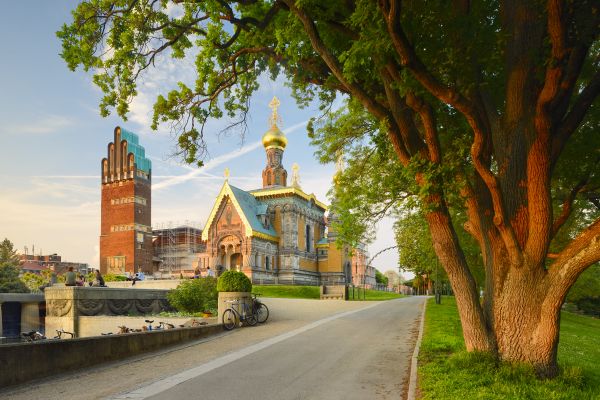
Darmstadt (2 nights)
- Day 5: Continue your journey on to the "City of Science" Darmstadt (30 mins by train). Stroll through the city and visit the Residential Palace and Marktplatz, before heading to Mathildenhöhe – the Wedding Tower, Exhibition buildings, Plane Tree Grove, and Artist houses are considered the cradle of the "Bauhaus". The electric bus, line M (30 mins), takes you from the city to Mathildenhöhe.
Tip:
The modern Darmstadtium, a 5-minute walk from the castle, is an architectural highlight that combines old and new. The climate-friendly conference venue is also almost entirely powered by renewable energy. - Day 6: Visit to the Messel Pit (16 mins by bus, followed by 10 mins on foot). Because of the level of preservation, the quantity and variety of fossils found there make this pit unlike any other in the world. In the modern visitor centre, the permanent exhibition "The World at the Time of Messel" presents an exciting mix of industrial history, volcanic activity, and evolution. Also worth a visit is the treasure chamber filled with original finds! Take part in a guided tour of the still-active excavation operations.
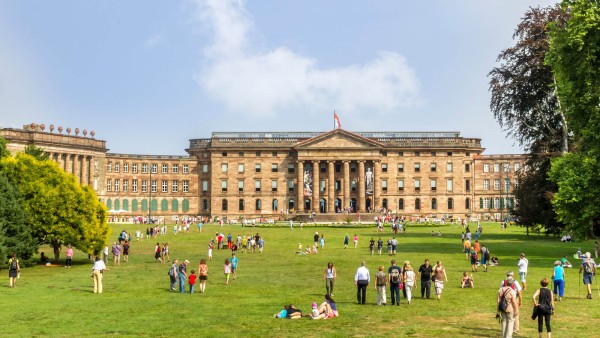
Kassel (1 night)
Day 7: Continue to Kassel, the city of the documenta Art Festival (train, 2.5 h), stroll through the city and go on an excursion to the baroque Bergpark Wilhelmshöhe. Europe's largest mountain park is laid out in the style of an English landscape garden, with Wilhelmshöhe Palace right in the middle. The water features, which have been operated continuously without electric pumps since 1730, are a special highlight.
Tip:
Stay a day longer and visit the Grimm World, a modern multimedia exhibition exploring the fairytale Brothers Grimm. Followed by an excursion to the "Sleeping Beauty Castle", at Sababurg, near Hofgeismar (1 hour by bus or train).
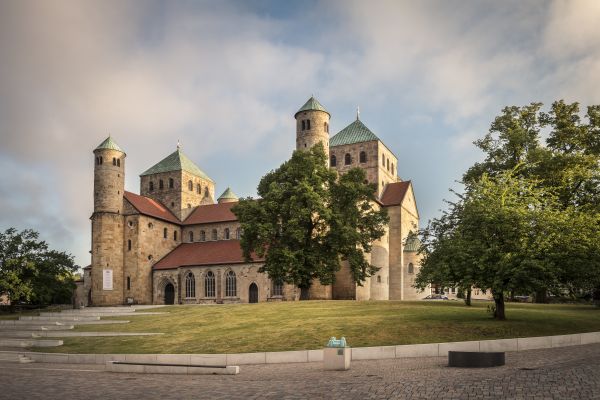
Hildesheim (2 nights)
- Day 8: Continue your journey on to Hildesheim (2 hours by train). Stroll through the city and go shopping in this official "Fairtrade Town" with numerous organic shops, zero-waste shops and second-hand shops on offer. Visit the cathedral and the Benedictine St. Michael's Church, with historical art treasures from the height of the Holy Roman Empire.
- Day 9: Excursion to Höxter (1.5 hours by train). Visit the former Benedictine abbey of Corvey. The Carolingian western façade forms the core of the monastery, which was founded in the 9th century and is still visible from a distance. In addition to the cloister, the Kaisersaal and the Fürstliche Bibliothek (princely library), many permanent exhibitions and cultural events await visitors.
- Day 10: Return home.